
What Is C5 C6 Radiculopathy? What Causes Cervical Radiculopathy? Dr
Cervical radiculopathy is a condition that affects the nerves or nerve roots in the neck, causing pain, numbness, or weakness in the upper extremities. This book chapter provides an overview of the anatomy, pathophysiology, diagnosis, and treatment of cervical radiculopathy, with references to relevant research articles. Learn more about this common spinal disorder and how to manage it.
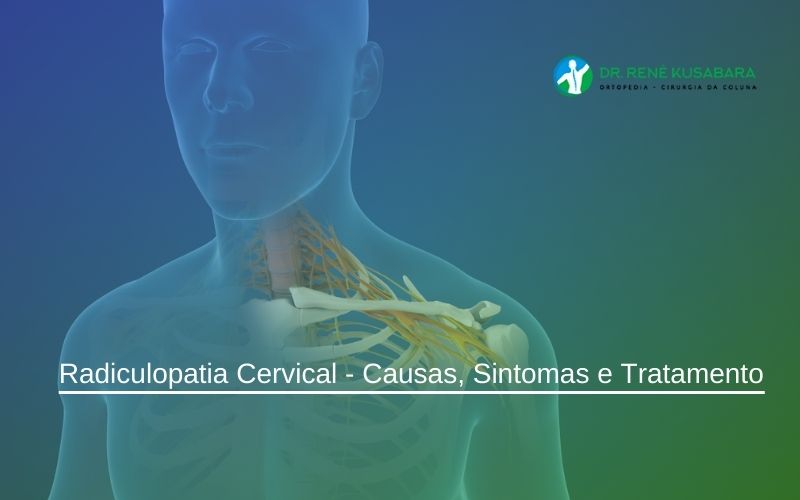
Radiculopatia Cervical Causas, Sintomas e Tratamento
Cervical radiculopathy, commonly called a "pinched nerve," occurs when a nerve in the neck is compressed or irritated where it branches away from the spinal cord. This may cause pain that radiates into the shoulder and/or arm, as well as muscle weakness and numbness. Cervical radiculopathy is often caused by "wear and tear" changes that occur.

Cervical RadiculitisCausesSymptomsTreatmentDiagnosis
The main symptom of cervical radiculopathy is pain that spreads into the arm, neck, chest, upper back and/or shoulders. Often, this affects just one side of your body. Sensory issues, such as.

C5 C6 Cervical Radiculopathy (Pinched Nerve) Stretches & Exercises
When a nerve in the cervical spine (neck) is irritated or damaged and causes pain and/or neurological symptoms, doctors call this condition - cervical radiculopathy. The nerves in the spine exit the spinal column through holes in the bones of the spine (vertebrae) from the right and left sides. The nerves exiting the spinal canal (nerve roots) are numbered from 1 to 8, based on the same.

Saiba mais sobre Radiculopatia Cervical Dr. Daniel Souto
The follow-up period varied from 4 to 111 months with an average of 50 months. Symptoms of C5 and/or C6 radiculopathy appeared in 10 patients (8.2%) postoperatively. Aggravation of a preoperative C5 and/or C6 radiculopathy was seen in 3 patients, while 7 patients developed a new C5 and/or C6 radiculopathy in the immediate postoperative period.

St. Louis Cervical Radiculopathy Neck Pain Car Accident Injury St
C5 pain occurs in the shoulder and radiates down the ventral arm to below the elbow. C6 radiculopathy is associated with pain down the superior lateral aspect of the arm into the first two digits. Commonly, there is overlap in the pain presentation of C6 radiculopathy and carpal tunnel syndrome. In carpal tunnel syndrome, patients often report.
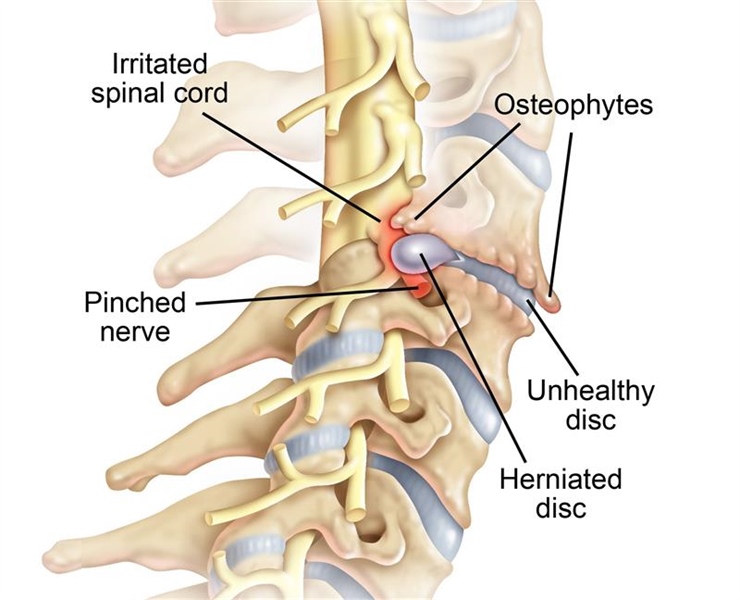
Cervical Radiculopathy First State Orthopaedics in Delaware
Cervical radiculopathy is a clinical condition characterized by unilateral arm pain, numbness and tingling in a dermatomal distribution in the hand, and weakness in specific muscle groups associated with a single cervical nerve root. It is caused by nerve root compression in the cervical spine either from degenerative changes or from an acute soft disc hernation.

Estudio de Radiculopatía cervical
En la mayoría de los casos, el dolor de una radiculopatía cervical comienza en el cuello y se desplaza hacia abajo por el brazo en el área abastecida por el nervio dañado. Este dolor generalmente se describe como agudo o punzante. Algunos movimientos del cuello, como extender o esforzar el cuello o girar la cabeza, pueden aumentar el dolor.
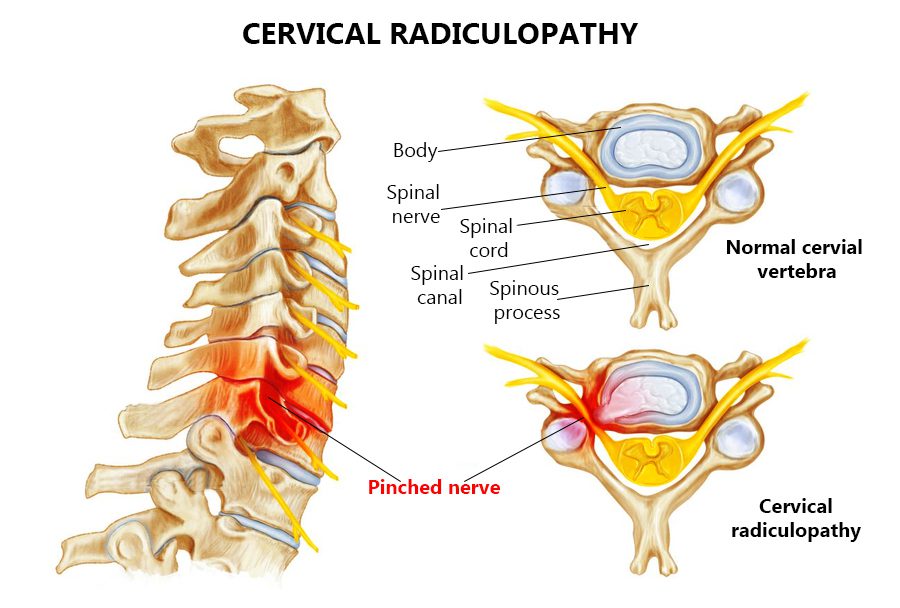
Cervical Radiculopathy Specialists in NYC New York Pain Care
C5 Radiculopathy: Primary innervation of the deltoid and biceps is from the C5 root with secondary innervation from the C6 root. Sensory NCS can not reliably assess the C5 nerve root. If the rhomboids show EMG changes on the exam, the C5 root is probably affected as the C5 root primarily innervates it with a small contribution from the C4 root.

slipped disc upper neck Dorothy Cameron
C6 spinal nerve. In between C5-C6, the C6 spinal nerve exits the spinal cord through a small bony opening on the left and right sides of the spinal canal called the intervertebral foramen. This C6 nerve has a sensory root and a motor root. The C6 dermatome is an area of skin that receives sensations through the C6 nerve.
RADICULOPATIA CERVICAL O QUE VOCÊ PRECISA SABER Head & Neck
Similarly, a disc herniation at the C5/6 level will lead to C6 nerve pinching or radiculopathy. The cervical spine consists of 7 bones or vertebrae along with 8 nerves or nerve roots. Cervical radiculopathy is a neurologic condition characterized by dysfunction of a cervical spinal nerve, the roots of the nerve, or both..
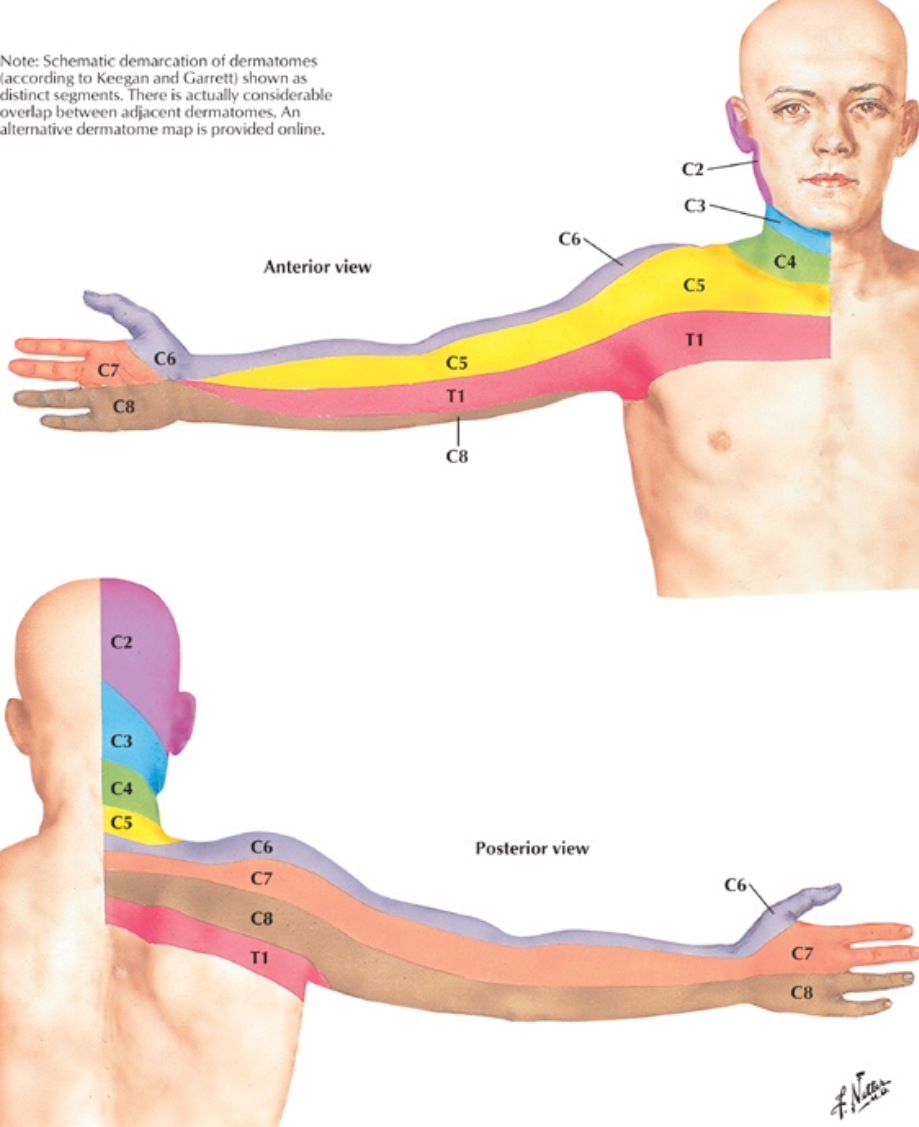
Cervical Radiculopathy Spine Orthobullets
C6 radiculopathy. Tingling, numbness, and/or pain may radiate through the arm and into the second digit (index finger). Weakness may occur in the front of the upper arm (biceps) or wrist. See All About the C5-C6 Spinal Motion Segment. C7 radiculopathy. Tingling, numbness, and/or pain may be felt down the arm and into the middle finger.

Cervical Radiculopathy
Pain on supra-scapular areas are associated with C5 or C6 radiculopathies, interscapular and infra-scapular pains are considered to be mainly from C7 and C8 radiculpathy, respectively. C2-4 radiculopathy is not common. Patients often complain of occipital or temporal pain that extends to the back of the ear or side of the neck.

Finding Relief Cervical Radiculopathy and Chiropractic Care
INTRODUCTION. Cervical radiculopathy (CR) is a common pain syndrome characterized by sensorimotor deficits due to cervical nerve root compression and inflammation [].In C5 or C6 radiculopathy, the proximal shoulder girdle muscles are commonly involved and it may be difficult for the patients to raise their shoulder [].The diagnosis of CR is based on clinical findings, imaging studies, and.
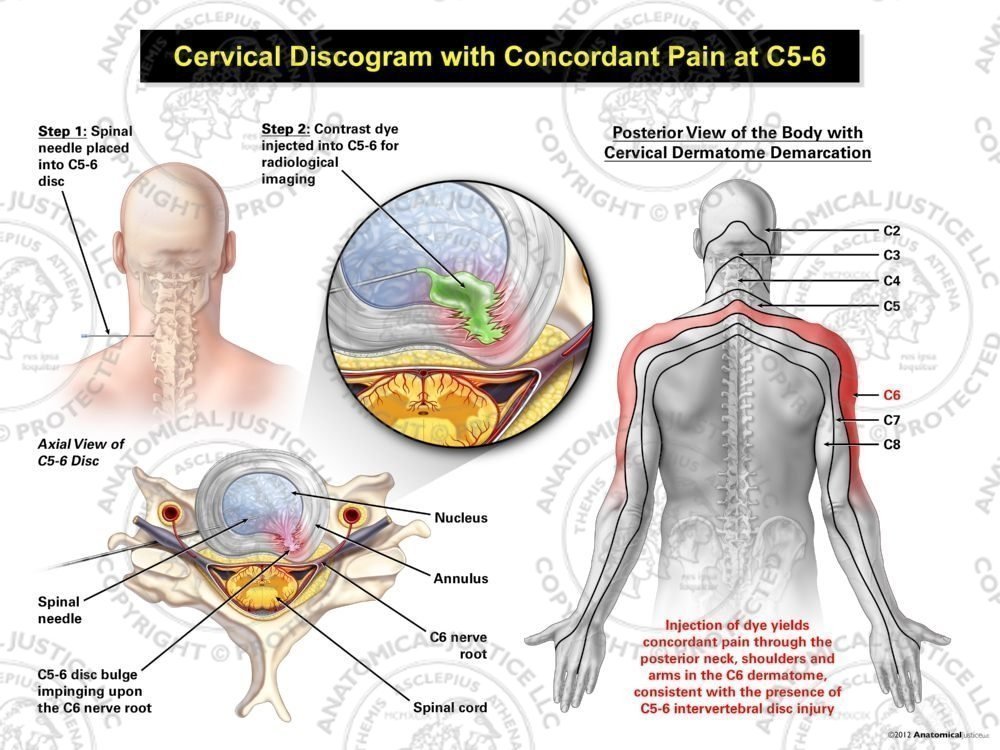
Male Left Cervical Discogram with Concordant Pain at C56
Cervical radiculopathy is a dysfunction of a nerve root in the cervical spine, is a broad disorder with several mechanisms of pathology and it can affect people of any age, [6] with peak prominence between the ages of 40-50 [2] [7] [8] . Reported prevalence is 83 people per 100,000 people [8]. A nnual incidence has been reported to be 107,3 per.

cervical spondylosis rosh Google Search Cervical radiculopathy
Results: According to our results, C 5 root compression (12.3%), C 6 root compression (41.5%), UTRC (44.6%) were detected. There was no difference between the groups regarding the Hawkins and Neer tests. The Yergason and Jobe tests were statistically higher in patients without UTRC. In the shoulder MRIs, the rate of subscapular muscle tear was.